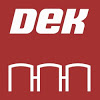Electronics Manufacturing Technical Articles
Papers and articles related to SMT, PCB & EMS industry.
- SMTnet
- »
- Technical Library
1432 SMT / PCB Assembly Related Technical Articles

LSU is the flagship university for Louisiana, supporting land, sea and space grant research.
Baton Rouge, Louisiana, USA
Victoria Transport Policy Institute
The Victoria Transport Policy Institute is an independent research organization dedicated to developing innovative and practical solutions to transportation problems. We provide a variety of resources available free at this ...
Victoria, British Columbia, Canada
At Wevolver we want to empower people to create and innovate by providing access to engineering knowledge. Humans need innovation to survive and thrive. Developing relevant technologies and creating the best possible solutions ...
Chorley, United Kingdom
At Wevolver we want to empower people to create and innovate by providing access to engineering knowledge. Humans need innovation to survive and thrive. Developing relevant technologies and creating the best possible solutions ...
Chorley, United Kingdom
National Natural Science Foundation of China
The National Natural Science Foundation of China (NSFC) was established on February 14, 1986. Upon its establishment, NSFC was an institution directly under the jurisdiction of the State Council, tasked with the administration ...
Beijing, China
Waste and Biomass Valorization
Springer Publishing is an award-winning publisher of healthcare and behavioral sciences content, featuring books, apps, journals, and digital products. With an acute understanding of how educators teach, how practitioners work ...
6330 Cham, Switzerland
Solderability Testing and Solutions Inc
Solderability Testing and Solutions Inc is located in Richmond, KY, United States and is part of the Consumer Services Industry. Solderability Testing and Solutions Inc has 2 total employees across all of its locations ...
Richmond, Kentucky, USA

PWB Interconnect Solutions Inc.
PWB designs and manufactures test equipment and provides services to test the reliability of Printed Circuit Boards.
Nepean, Ontario, Canada
Osaka University, or Handai, is a public research university located in Osaka Prefecture, Japan. It was one of Imperial Universities in Japan, one of the Designated National University and selected as a Top Type university ...
Osaka, Japan
National Cheng Kung University
National Cheng Kung University is a public research university located in Tainan, Taiwan. NCKU is one of the best comprehensive universities in Taiwan and a leader in promoting industry-academia cooperation. ...
Tainan City, Taiwan

Intel designs and builds the essential technologies that serve as the foundation for the world's computing devices.
Santa Clara, California, USA

Helping businesses find each other.
Portland,
Consultant / Service Provider, Marketing Agency, Media / Publisher / Online Resource, Other

Solder pastes, solder preforms, solder spheres, soldering fluxes, electrically-conductive adhesives. All alloys: tin-lead, lead-free, indium alloys, and more.
Utica, New York, USA

With numerous facilities in the United States, we are one of the electronics industry's leading manufacturers of lead-free solder products, superior quality stencils, and precision cut parts.
Greeley, Colorado, USA
The University of Southampton is a research university in Southampton, England. The university's origins date back to the founding of the Hartley Institution in 1862. In 1902, the Institution developed into the Hartley University
Highfield, Southampton, United Kingdom

The ASM SMT Solutions segment is made up of SMT Printing Solutions (DEK) and SMT Placement Solutions (SIPLACE). Under the DEK brand, it sells best-in-class printing solutions for the electronics and solar industries.
Suwanee, Georgia, USA

Isola a global material sciences company focused on designing, developing, manufacturing and marketing copper-clad laminates and dielectric prepregs used to fabricate advanced multilayer PCBs.
Chandler, Arizona, USA
As a next-generation university, Concordia sets its sights further and more broadly than others. We align the quality of learning opportunities to larger trends and substantial challenges facing society. We pursue technology ...
Montreal, Quebec, Canada
Founded in 1419, it is the third-oldest university in Germany. It is the oldest and largest university in continental northern Europe and the Baltic Sea area, and 8th oldest in Central Europe.[3]
Rostock, Germany

ACI, an authorized IPC Training Center operating the National Electronics Manufacturing Center of Excellence providing analytical testing, manufacturing and repair services to the electronics industry.
Philadelphia, Pennsylvania, USA
Consultant / Service Provider, Standards Setting / Certification, Training Provider
 (640x183).jpg)
MIRTEC has earned a solid reputation as one of the most Progressive and Dynamic Suppliers of Automated SMT Inspection Equipment to the Electronics Manufacturing Industry.
Oxford, Connecticut, USA

Isola a global material sciences company focused on designing, developing, manufacturing and marketing copper-clad laminates and dielectric prepregs used to fabricate advanced multilayer PCBs.
Chandler, Arizona, USA
Arlon Technology Enabling Innovation
Rancho Cucamonga , California, USA

Global manufacturer of XPM Reflow Ovens, ZEVA Selective Soldering and Delta Wave Soldering Equipment.
Camdenton, Missouri, USA

Solder pastes, solder preforms, solder spheres, soldering fluxes, electrically-conductive adhesives. All alloys: tin-lead, lead-free, indium alloys, and more.
Utica, New York, USA

Engineering Physics Center of MSU
We're engaged in the development and sale of complex electronics, automation of experimental installations in laser physics, creation of automatic testing systems and diagnostics of printed circuit boards and electronic components
Moscow, Russia

Engineering Physics Center of MSU
We're engaged in the development and sale of complex electronics, automation of experimental installations in laser physics, creation of automatic testing systems and diagnostics of printed circuit boards and electronic components
Moscow, Russia

One of the world's leading suppliers of integrated production systems, chemistry, equipment, know-how and service for electroplating, semiconductor and printed circuit board manufacturing.
Berlin, Germany
Uyemura International Corporation
Ontario, , California, USA

Henkel is a manufacturer of materials for PCB and component assembly. The materials include Loctite adhesives, Multicore soldering products, Hysol encaps and underfills, and Power Devices thermal phase change pads.
Irvine, California, USA
Life. Energy. Environment. This triad of engineering priorities is perhaps unmatched in its potential for improving the quality of life for all inhabitants of planet Earth. And at the heart of all three is chemical engineering.
Stanford, California, USA

ACI, an authorized IPC Training Center operating the National Electronics Manufacturing Center of Excellence providing analytical testing, manufacturing and repair services to the electronics industry.
Philadelphia, Pennsylvania, USA
Consultant / Service Provider, Standards Setting / Certification, Training Provider

A leading supplier of precision cleaning chemistries to the worldwide electronics, metal finishing, medical, semiconductor, and optical industries.
Nashville, Tennessee, USA

The globally leading provider of high precision cleaning products, services and training solutions in the electronics and semiconductor manufacturing industries.
Manassas,
Consultant / Service Provider, Manufacturer, Training Provider

We provide custom software for industry. We develop engineering projects as well. Our electronic, control and mechanical engineers are at your service. Based in Barcelona.
Terrassa, Spain

Sanmina-SCI is a tier 1 provider of EMS and PWB along with vertically integrated capabilities from design through qualification.
San Jose, California, USA

With numerous facilities in the United States, we are one of the electronics industry's leading manufacturers of lead-free solder products, superior quality stencils, and precision cut parts.
Greeley, Colorado, USA
MiTAC International Corporation
MiTAC Holdings Group has been developing into a multinational organization of JDM / ODM / OEM / OPM (Original Product Manufacture), design and R&D, manufacturing, testing, assembling, marketing, and servicing in around four decade
Taoyuan City, Taiwan
AT & S Austria Technologie & Systemtechnik Aktiengesellschaft
Mission: First choice for advanced applications Mission: We set the highest quality standards in our industry. We industrialize leading-edge technology. We care about people. We reduce our ecological footprint. We create value.
Leoben, Austria
Development of Character, Search for the Truth, and Service to Society Founded in 1954 to fulfill the dearest wish of empowering and bringing prosperity to the nation, Inha University stands for the Ideals of building students'
Incheon, South Korea
Epoxy Technology, Inc., founded in 1966, is a pioneer in the development and manufacture of Specialty Epoxy, UV & UV Hybrid adhesives to meet key performance standards needed in high-tech applications.
Billerica, Massachusetts, USA

Henkel is a manufacturer of materials for PCB and component assembly. The materials include Loctite adhesives, Multicore soldering products, Hysol encaps and underfills, and Power Devices thermal phase change pads.
Irvine, California, USA
FinCRM holds expertise in providing Customer Relationship Management (CRM) software and Full Stack Office Management solutions.
Pune, India
Continued strength Our faculty, students and staff have redoubled their collaborative efforts to strengthen, grow and broaden the programs in the School of Electrical, Computer and Energy Engineering. The school's continued streng
Tempe, Arizona, USA
Life. Energy. Environment. This triad of engineering priorities is perhaps unmatched in its potential for improving the quality of life for all inhabitants of planet Earth. And at the heart of all three is chemical engineering.
Stanford, California, USA

DEM develops and markets highly sophisticated materials used in the electronic materials segment of the global electronics value chain.
Marlborough, Massachusetts, USA
Research, development, manufacturing and marketing of sophisticated chemical products developed by applying fine chemicals and nano-technologies in cutting-edge fields such as home information appliances, IT, semiconductors, batte
Tokyo, Japan
Production and distribution of metal jointing materials for electronics (solder, flux, brazing alloys, etc) Sales of nonferrous metal Export-import business
Osaka, Japan
Flex Ltd. is an American Singaporean-domiciled multinational electronics contract manufacturer. It is the third-largest global electronics manufacturing services, original design manufacturer company by revenue, behind only ...
Milpitas, California, USA
Institute for Factory Automation and Production Systems (FAPS)
At the Technical Faculty (TF) of the Friedrich-Alexander-Universität Erlangen-Nürnberg (FAU) more than 20 engineering and computer science courses are offered. The TF has an excellent reputation in science and business.
Nuremberg, Germany









